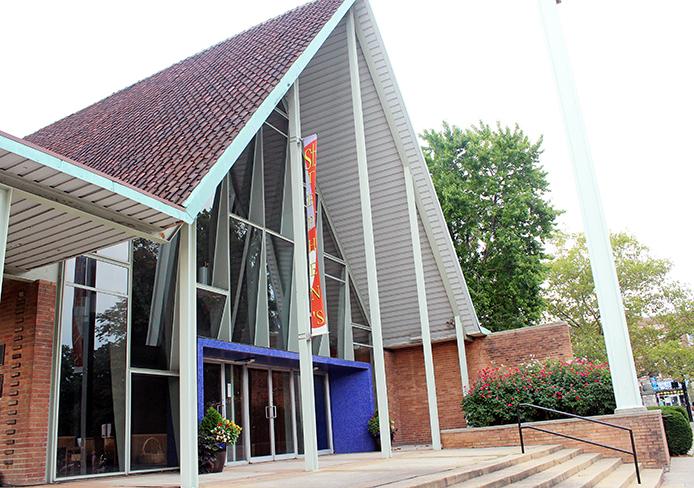
OSU is paying St. Stephen’s Episcopal Church more than $12.8M to not build an apartment building. Credit: Shelby Lum / Photo editor
A church’s plans to build a nine-story residential apartment on Woodruff Avenue were halted after Ohio State promised nearly $13 million in exchange for scrapping the project.
OSU is paying St. Stephen’s Episcopal Church, located at 30 W. Woodruff Ave. across from Ramseyer Hall, more than $12.8 million to withdraw the church’s proposed project, according to an agreement released by the university in June. Other items in the agreement grant the university right of first refusal if the church, which has been at its current location for more than 80 years, decides to sell its property and permit the university to weigh in on any of the church’s future projects, OSU spokesman Gary Lewis said.
The proposed project, which was originally being called the Lofts at St. Stephen’s, would have housed somewhere between 250 to 280 students, according to Rev. George Glazier, rector of St. Stephen’s.
“We were ready to break ground on building and the university did not want us to do that,” Glazier said, who added the housing was meant to “pull students closer in to this area.”
The church will receive a one-time payment of $7.5 million from the university with the remaining $3 million to be payable in 25 years at an interest rate of 5 percent, which is nearly $213,000 a year, according to the agreement.
In addition to the money, the church will get 100 parking spots inside Arps Garage on Sunday mornings, which will ease parking difficulties for churchgoers, Glazier said.
Lewis said the church’s project was not consistent with the university’s plans for the North Residential District.
“The university felt that the previously proposed high-density housing project would be a potential functional andaesthetic detriment to an important gateway into the campus and the North Residential District, which is now moving forward in support of our Second-year Transformational Experience Program,” Lewis said in an email.
The Board of Trustees approved the Second-year Transformational Experience Program in April 2012, which prompted a $396 million North Campus Renovation Project that will provide more student housing as OSU looks to have all second-year students living on-campus by 2016.
Glazier said it’s going to take a while for the church to figure out what exactly to do with the money, but first off, it’s going to simply pay its debts.
“We are paying all our bills. I would be lying to say more money doesn’t help us maybe do more,” Glazier said.
St. Stephen’s, which is dependent on member donations, has a congregation of about 200 people with about 100 to 125 people showing up on an average Sunday mornings, Glazier said.
Both Lewis and Glazier said the deal is a demonstration of cooperative relationship between the church and the university, and Glazier called it a “win-win” situation.
“This is about mission and it is about connection with Ohio State University,” Glazier said. “So the money wasn’t what we are after at any point. Not that the money was not nice, it’s not the point.”
David Soland, who works at the gallery inside the church, said the money will allow the church to do more student outreach.
“We are looking at this as more of a partnership with the university and the money is actually going to go to enrich students’ lives,” Soland said. “We are looking at this as a blessing, a way to actually doing more good in the community.”
Other churchgoers, like Charles Baker, a Ph.D. student in mathematics, agreed the deal is the “best plan” for both sides, but was disappointed to see the student housing plan didn’t go through.
“I wasn’t sure about the whole plan to build student housing but (had they built) it, I probably would’ve moved into it,” Baker said.
Although the deal seems to be satisfying on both sides, some OSU students have concerns about how the university is spending the money.
Sienna Zimmerman, a fourth-year in business, said the deal isn’t worth the cost.
“They could’ve just let them (the church) build the housing and use the money to have more student activities on campus,” Zimmerman said.


